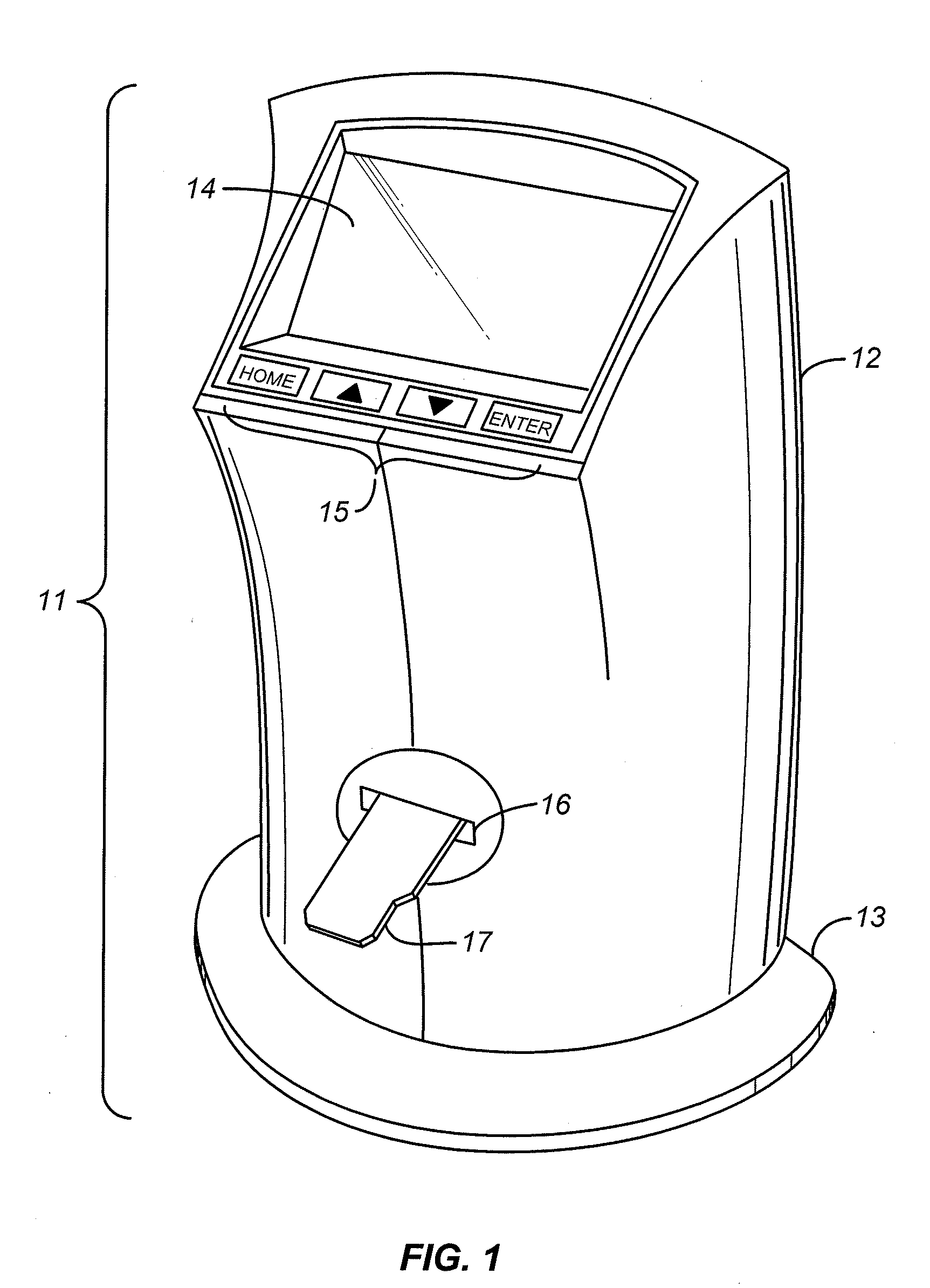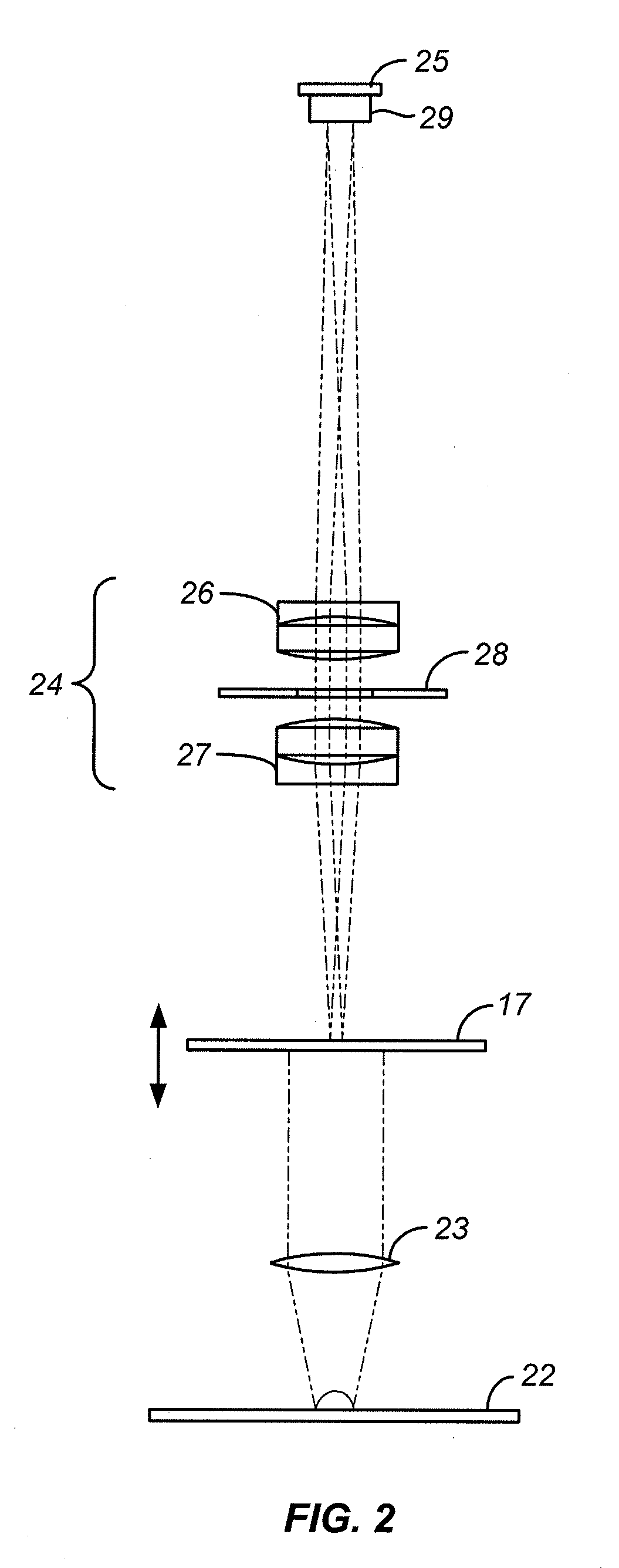Compact automated cell counter
a cell counter and compact technology, applied in the field of hemocytometry and systems, can solve the problems of inability to accurately count cells, etc., to achieve low cost, low cost, and low cost
- Summary
- Abstract
- Description
- Claims
- Application Information
AI Technical Summary
Benefits of technology
Problems solved by technology
Method used
Image
Examples
Embodiment Construction
[0014]The upper and lower optical windows between which the cell suspension is retained inside the sample vessel are close enough that the retained suspension is a thin film whose lateral dimensions, i.e., its exposed length and width, are at least an order of magnitude greater that its thickness. The entire exposed area (i.e., lateral dimensions) of the sample chamber or a laterally dimensioned portion thereof serves as a field of view that is projected onto a digital imaging sensor that contains at least about 4,000,000 (four million) pixels, or in certain embodiments from about 4,000,000 to about 10,000,000 pixels, with each pixel being no greater than about 2×2 μm (4 μm2) in size, or from about 0.5×0.5 μm (0.25 μm2) to about 2×2 μm (4 μm2) in certain embodiments, and in certain of the latter from about 1×1 μm (1 μm2) to about 2×2 μm (4 μm2). The field of view imaged by the sensor is at least about 3 square millimeters, and often from about 3 mm2 to about 10 mm2. A complementary ...
PUM
| Property | Measurement | Unit |
|---|---|---|
| area | aaaaa | aaaaa |
| area | aaaaa | aaaaa |
| height | aaaaa | aaaaa |
Abstract
Description
Claims
Application Information
 Login to View More
Login to View More - R&D
- Intellectual Property
- Life Sciences
- Materials
- Tech Scout
- Unparalleled Data Quality
- Higher Quality Content
- 60% Fewer Hallucinations
Browse by: Latest US Patents, China's latest patents, Technical Efficacy Thesaurus, Application Domain, Technology Topic, Popular Technical Reports.
© 2025 PatSnap. All rights reserved.Legal|Privacy policy|Modern Slavery Act Transparency Statement|Sitemap|About US| Contact US: help@patsnap.com



